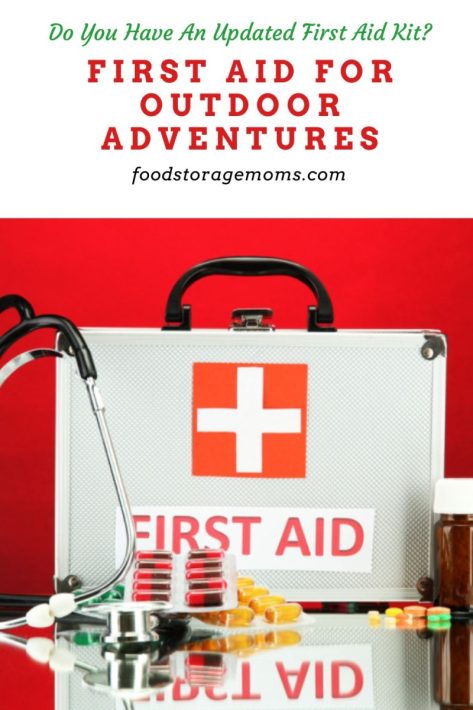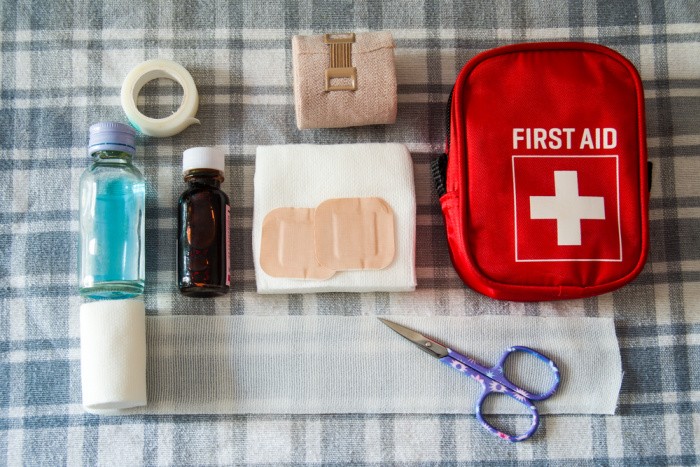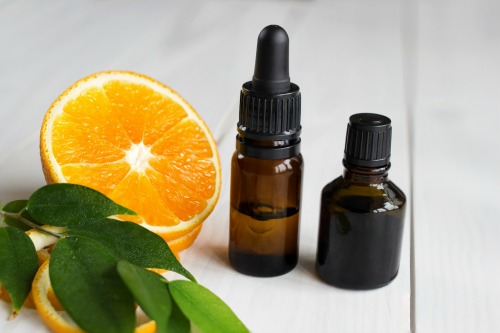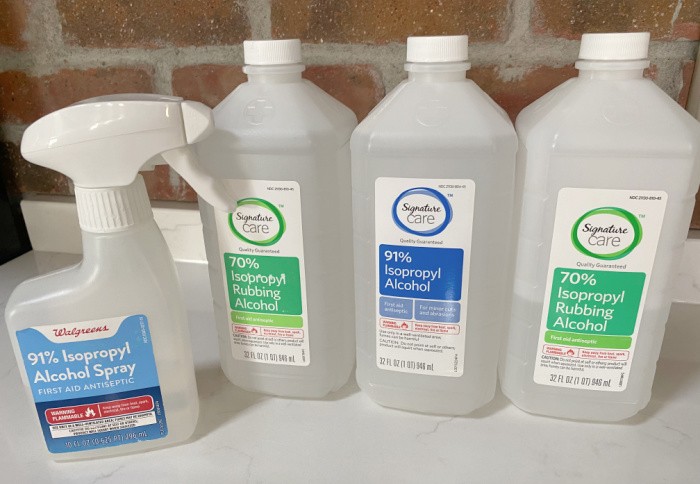First Aid for Outdoor Adventures
Is first aid for outdoor adventures on your list of things to consider when planning that next campout or one of many day hikes this summer? Venturing into the great outdoors is a thrilling way to escape the hustle and bustle of everyday life. Whether you’re hiking through rugged mountains, camping in remote wilderness, or embarking on an adrenaline-fueled adventure, it’s important to prioritize safety.
One crucial aspect of outdoor safety is having a solid understanding of first aid techniques tailored specifically for outdoor adventures. That includes wilderness first aid kits and wilderness medicine of various types you may need. Here is what I believe you need regarding first aid for an outdoor adventure.

What kind of outdoor injuries can occur?
Outdoor activities come with their fair share of risks, and it’s vital to be aware of the most common injuries that can occur. These injuries can range from minor cuts and bruises to more serious conditions such as a sprained ankle, fractures, heat exhaustion, and allergic reactions to insect bites. Recognizing the signs and symptoms of these injuries, adventurers can respond with appropriate care.
How to Treat Outdoor Injuries
Cuts, Scrapes, and Wounds
- Cleanse the wound with clean water and mild soap.
- Apply direct pressure to control bleeding.
- Cover the wound with a sterile dressing or bandage.
Sprains and Strains
- Rest the injured limb and elevate it if possible.
- Apply ice wrapped in a cloth to reduce swelling.
- Compress the area with an elastic bandage.
Fractures and Dislocations
- Immobilize the injured area using splints or improvised materials.
- Support the injured limb with a makeshift sling using large safety pins if necessary to hold things in place.
- Seek medical help immediately. There are wilderness first responders, usually in the form of Search and Rescue Teams.
Heat Exhaustion and Dehydration
- Move the person to a shaded area and loosen tight clothing.
- Provide cool water to sip on.
- Apply wet towels or use a water spray to help cool the body.
Allergic Reactions from Insect Bites and Stings
- Remove the stinger, if present, using a scraping motion. Apply an antiseptic cream or ointment.
- Administer an antihistamine if available. Some people have found that Benadryl helps.
- Monitor for signs of severe allergic reactions and seek medical assistance if necessary.
How to Prevent Outdoor Injuries
While being prepared to handle injuries is crucial, preventing accidents and mishaps in the first place should always be a priority. Here are some prevention strategies to consider:
Plan and Prepare
- Before heading outdoors, research the location thoroughly. Understand the terrain, weather conditions, and potential hazards specific to the area.
- Develop a detailed plan that includes communication methods, emergency contacts, and a designated meeting point. Share this plan with your group or trusted individuals who are aware of your outdoor activities.
- As a backpacker, make sure you have the right backpack for the type of activity since the terrain and the weight of the full pack can make a real difference. Backpacks come in various sizes and can be purchased from outdoor retailers like REI and also on Amazon.
- If you’re new to many outdoor activities that may take you into higher-risk environments, consider taking classes from the National Outdoor Leadership School (NOLS). They provide training in a wide variety of activities like backpacking, canoeing, kayaking, skiing, and more importantly, wilderness medicine.
Stay Hydrated and Nourished
- Drink plenty of water and eat nutritious meals to maintain energy levels.
- Carry extra water and snacks, especially on longer hikes or during intense physical activities.
- Be aware of the typical symptoms of dehydration and respond as needed. These may include nausea, muscle cramps, dry eyes, very yellow urine, headache, constipation, dry mouth, dry lips, dry hands, being extra thirsty, and feeling upset and disoriented.
Wear the Right Clothes
- Wear appropriate footwear with good traction.
- Dress in layers to accommodate changing weather conditions. You don’t want to get too hot or experience hypothermia in the cold.
- Protect yourself from the sun with a hat, sunglasses, and sunscreen.
- Learn How To Wash Clothes During An Emergency
Be Mindful of Wildlife and Hazards
- Respect wildlife and keep a safe distance.
- Stay on marked trails and be cautious of potential hazards like slippery rocks or loose soil.
What should I do if someone gets injured during an outdoor adventure?
If someone gets injured during an outdoor adventure, the first step is to assess the situation and ensure your own safety. If necessary, call for help or seek assistance from nearby individuals. Provide first aid as needed, such as applying pressure to stop bleeding or immobilizing a suspected fracture. If the injury is severe or life-threatening, it’s important to get the person professional medical care as quickly as possible.
What should I include in my outdoor first aid kit?
Your outdoor first aid kit should include items such as adhesive bandages, sterile gauze pads, antiseptic wipes, adhesive tape, tweezers, scissors, disposable gloves, pain medication, insect repellent, sunscreen, and a CPR mask. It’s also important to consider any specific needs related to your outdoor activity, such as blister treatment or snakebite kits. If you use a specific prescription medication item consider taking some along since you may be away from home longer than expected.
What to Include in Your Outdoor First Aid Kit
- Adhesive bandages (assorted sizes): These are useful for covering small cuts, blisters, or abrasions.
- Sterile gauze pads and adhesive tape: These are essential for dressing larger wounds or applying pressure to control bleeding.
- Antiseptic wipes: These can be used to clean wounds and prevent infection.
- Tweezers: Helpful for removing splinters, ticks, or other foreign objects from the skin.
- Scissors: Useful for cutting bandages, clothing, or medical tape.
- Disposable gloves: Protect yourself and others from contamination while providing care. If you already have an illness, think twice before leaving home for any adventure.
- Antihistamines: These can help alleviate allergic reactions or insect bites.
- Pain relievers: Include over-the-counter pain medications such as acetaminophen or ibuprofen.
- Thermometer: Important for monitoring body temperature in case of fever.
- CPR mask: A compact mask that can be used for administering CPR safely.
- Blister treatment: Moleskin or blister cushions can provide relief for foot blisters caused by hiking or walking.
- Oral rehydration salts: Effective for treating dehydration caused by excessive sweating or diarrhea.
- Snakebite kit: If you’re in an area with venomous snakes, consider carrying a snakebite kit that includes a suction device and bandages.
- Emergency blanket: A lightweight, compact blanket that helps retain body heat during cold weather or shock situations.
- Insect repellent: Protect yourself from mosquitoes, ticks, and other insects that may carry diseases.
- Sunscreen: Choose a broad-spectrum sunscreen with a high SPF to protect against harmful UV rays.
- Emergency whistle: Use this to signal for help in case of an emergency.
- First aid manual: A comprehensive guide that provides instructions for various medical situations.
More First Aid Tips
- Uncommon First Aid Items We Should All Have
- First Aid & Medicine
- How to Make A Children’s First Aid Kit
Final Word
The next time you’re planning an outdoor adventure, keep this first aid for outdoor adventures in mind. You’ll want to have as many things on hand as possible, just in case you run into an emergency. I’d love to hear what you keep on hand for outdoor first aid emergencies. May God Bless this World, Linda
Copyright Images: First Aid Kit on Red Background Depositphotos_19368547_S






















Trying a test comment as mine are getting deleted
Let me know if you see this comment. lol
HI Jess, oh my gosh, this is crazy! My website is being worked on, let me check the plug in. Thanks for letting me know. Linda
5×5
Hi Matt, I checked the spam and it’s not there either. I’ve been meaning to send you an email, I’m sure you. saw what happened here in Utah. Linda
Hi Matt, WHAT????
Tried posting twice and it disappeared. I’ll try again
HI Matt, I’m so sorry. I have my IT group checking on it. Linda
Love this. Living in Florida, we sure find ourselves in a lot more outdoor adventures than we’d like. We always have to bring water with us, it’s too dangerous to leave the house without it!
Take a hard look at your outdoor activity and do an assessment and build your kit based on that. If your cutting wood then rapid blood loss is most likely so quick clot and tourniquet. If you’re hiking then sprains and breaks so instant cold compress and sams splint. If your fishing then hook removal so pliers that can cut the hook.
Risk assessment of yourself and what you’re doing. If your 70, don’t exercise regularly strenuously, it’s 113 degrees, in a place you don’t know, your not hydrated and lack enough water then do you really need to hike in a place called “Death Valley”?
Swallow the ego and ride the common sense train.
Your comment is here, probably just not showing up as quickly as before?!
It went through on 3rd try. Gremlins from
Murphy law got it
HI Matt, THIS IS WHY I NEED YOUR COMMENTS!!! LOL! I love them! Thanks for your patience, my friend. “Swallow the ego and ride the common sense train.” I love this, you nailed it as usual. I love it, Linda
Don’t get it wrong I’ve been a heat casualty in the military several times and almost cold casualty a few times. I’m not too proud to admit I’ve made mistakes on a few that were avoidable. Some were and some weren’t.
Hi Matt, I call those learning curves. We have all had them. Great reminder how we learn. Linda
I agree with what Matt said. Common sense ain’t so common anymore.
Hi Paula, I know, right? Linda